I returned home last Friday at 4am after 13 hours, 400 miles and four stops. And after three attempts, I finally had the photo of Teter Rock I’d been wanting (above). Planning and persistence paid off. But it was just the latest addition to a project I began two years ago.
March of 2020 saw my travel and workshops for the rest of the year canceled due to the pandemic. After a few months making photos around home, I decided I needed to get out. While I’ve lived in Kansas for twenty years, I hadn’t spent much time exploring the state. So, making lemonade out of lemons, that became my mission starting that summer.
At just over 82,000 square miles, Kansas covers a lot of ground. Just ask anyone who’s driven across it. Wanting to keep my travel limited to day trips, I focused on the eastern part of the state. And the first step to that was doing research.
All photography revolves around subject, light and background. Therefore the first I needed to do was find some good subjects. Since I enjoy doing night photography (and light painting), I started searching the internet for interesting places outside of Kansas City (where it’s darker at night) and soon found a list of one-room schoolhouses (historical societies are great for that). Narrowing that list down to those within a three-hour drive, I started working on a plan of which ones to visit. And then comet Neowise made its appearance. A more unique subject, it would still need something in the foreground. Fortunately, I already had that list of schoolhouses.
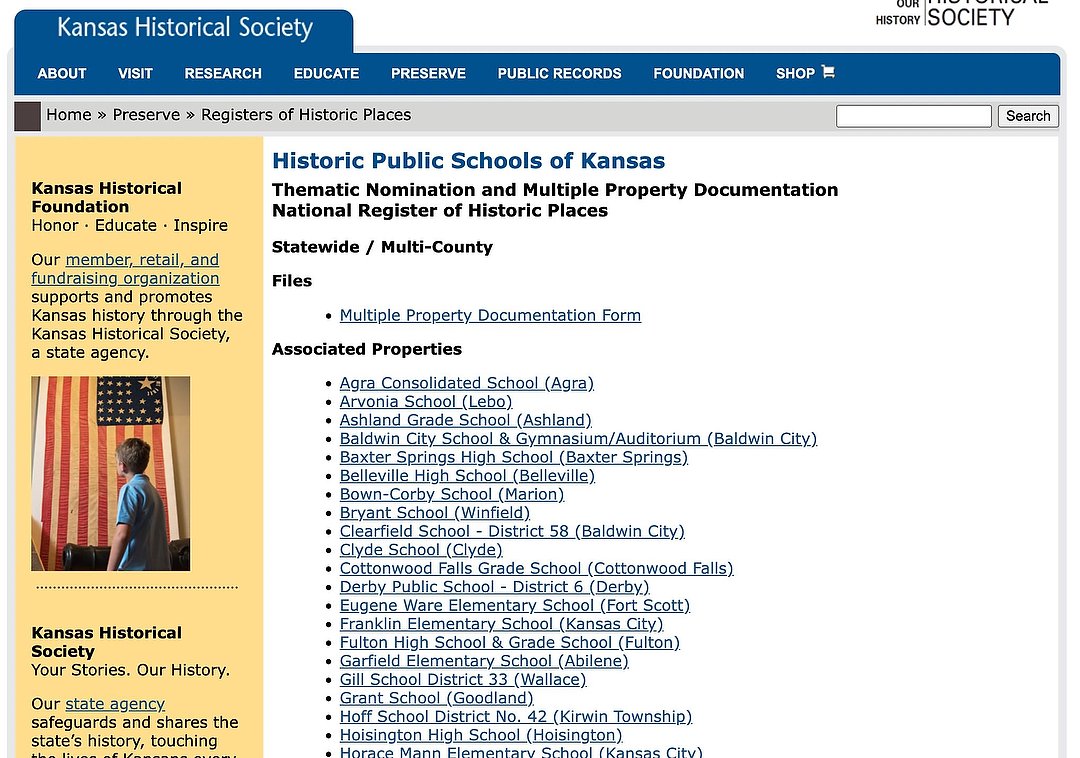
Here’s the website where I found a list of historic schoolhouses in Kansas. After that, I needed to weed it down to those that were within a three-hour drive of where I live.
In early July, a friend and I headed to southwest Kansas to check out three of those schoolhouses. We hoped to find one that would make a good foreground for the comet. Unfortunately, none would fill that role well (problems with the angle, trees, homes nearby, etc.). Having been concerned that might happen, we’d left early enough for Plan B – which was simply driving around until we found something else (which happened to be an old church). Sadly, as the light faded, clouds rolled in from the north blocking any view of the comet. The evening wasn’t a complete waste, though. We re-traced our steps to the first of those schoolhouses and made a nice photo of the Milky Way above it.
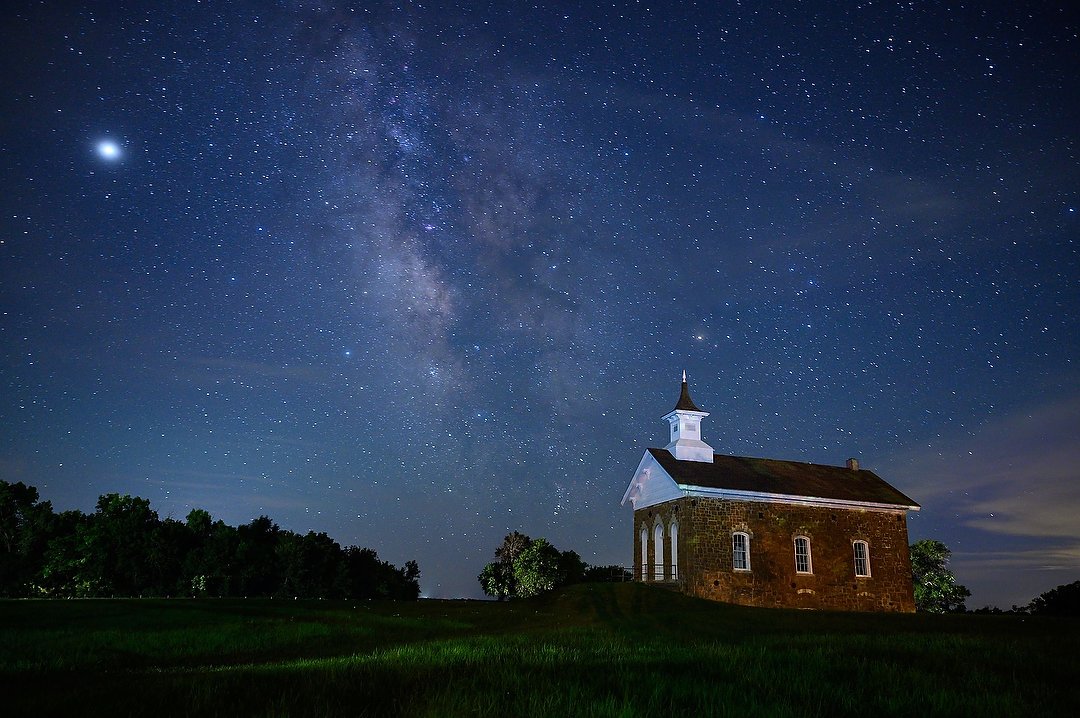
This is the Arvonia Schoolhouse. It was first on our list to pair with the comet, but when looking north, homes in the background would create too much ambient light. However, the view south was clear, so it paired nicely with the Milky Way later that evening. Nikon Z 6, Manual exposure, 3800K white balance, ISO 2000, 30-seconds at f/2.8, Nikkor 24-70mm 2.8 lens at 26mm.
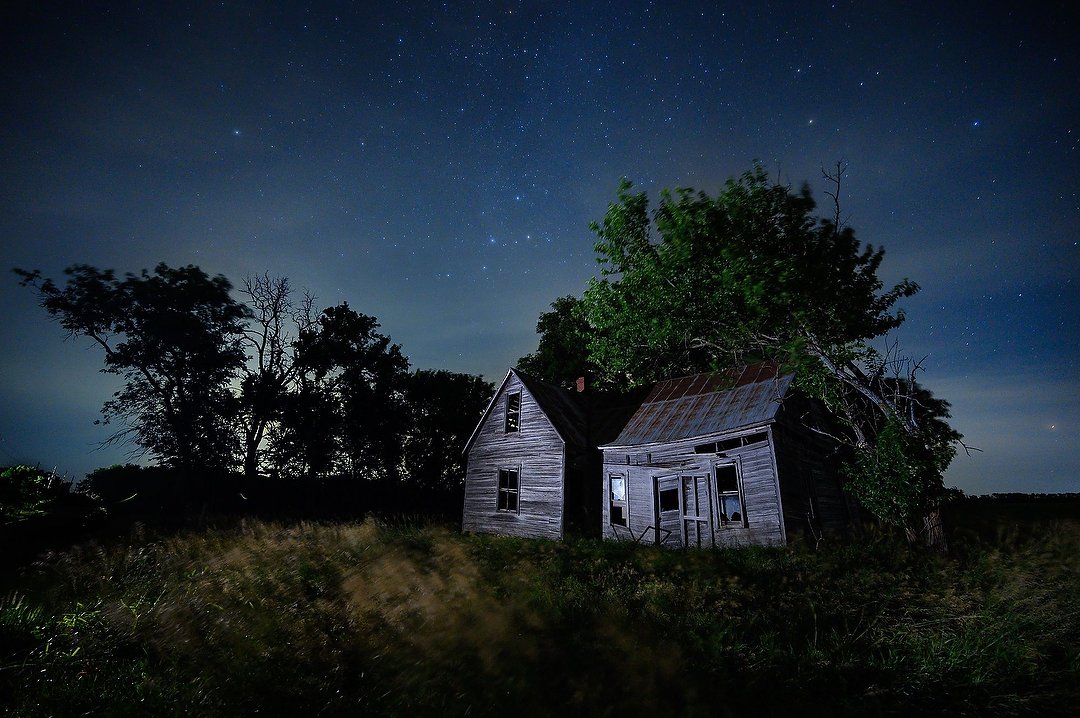
This abandoned farmhouse was off a road near the schoolhouse, which we’d also seen earlier in the day. That made it an easy decision to stop, light it with a single Lume Cube, and shoot, even at 1am. Nikon Z 6, Manual exposure, 3800K white balance, ISO 3200, 30-seconds at f/4, Nikkor 14-30mm f/4 lens at 14mm.
Over the next few weeks we made several more trips out there and came away with a few nice photos that included the comet (and here’s a story about that). And after that we continued going out, when the weather and sky cooperated, for more night shoots until winter settled in. On each trip I found other locations that might make good photos at the right time, and kept adding them to my growing list. And I continued the internet research as well, finding Facebook groups and YouTubers who had posted other interesting places that might be worth visiting, including Teter Rock.
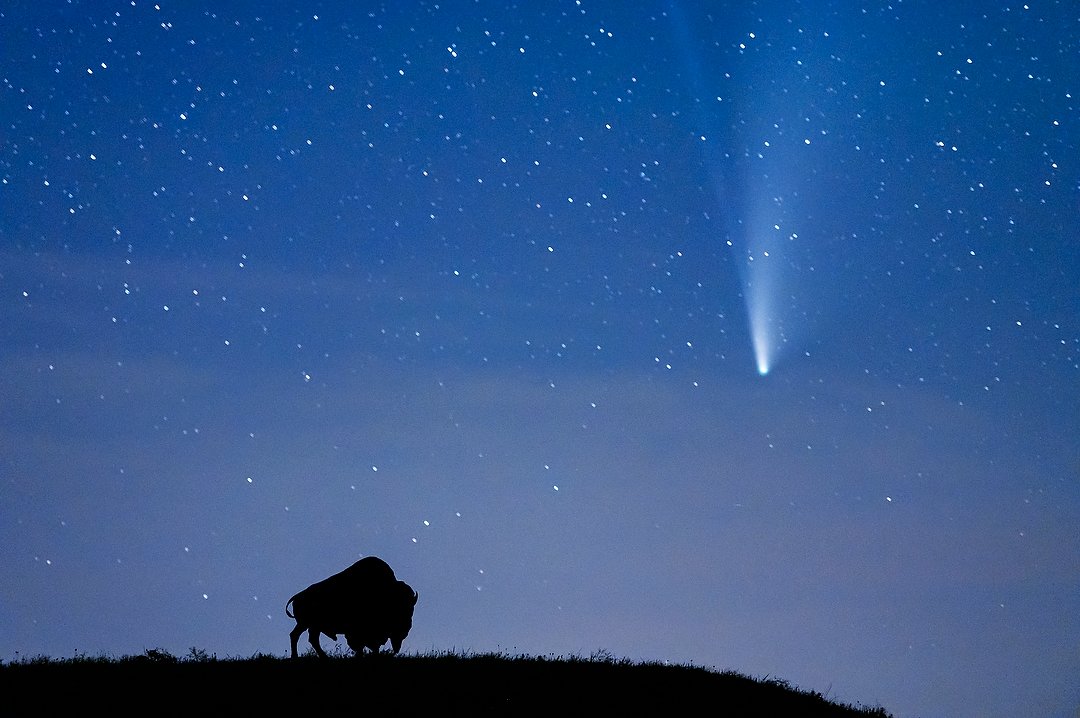
While I came away with about a half-dozen photos I really liked of Comet Neowise that summer, this was easily my favorite. It’s a bison statue we found on a small hill near an old church while exploring the area. Nikon Z 6, Manual exposure, 3800K white balance, ISO 10,000, 13-seconds at f/2.8, Nikkor AF-S 70-200mm f/2.8G ED VR II lens at 145mm.
Situated on a high spot in the grasslands northeast of Wichita, it was originally a pile of rocks to help west-bound settlers find nearby water. Eventually those rocks were hauled away to be used as building materials. In 1954, though, a large slab was erected in their place as a monument to the man who created that first pile (more details here). Coming across it on the internet, I knew it would make for a nice night photo, so added it to my list. The following year, 2021, on another trip to a few other locations in the area, I managed to visit. It wasn’t easy. After a long, dusty drive down a gravel road, you turn into open pastureland and follow a track uphill. At one point the track was so heavily rutted I had to get out and walk through to find a route I wouldn’t get bogged down in. With no cell service, it wasn’t a good place to get stuck. Eventually I did make it in, but worried I might not make it out in the dark. I shot through sunset, then left before night settled in.
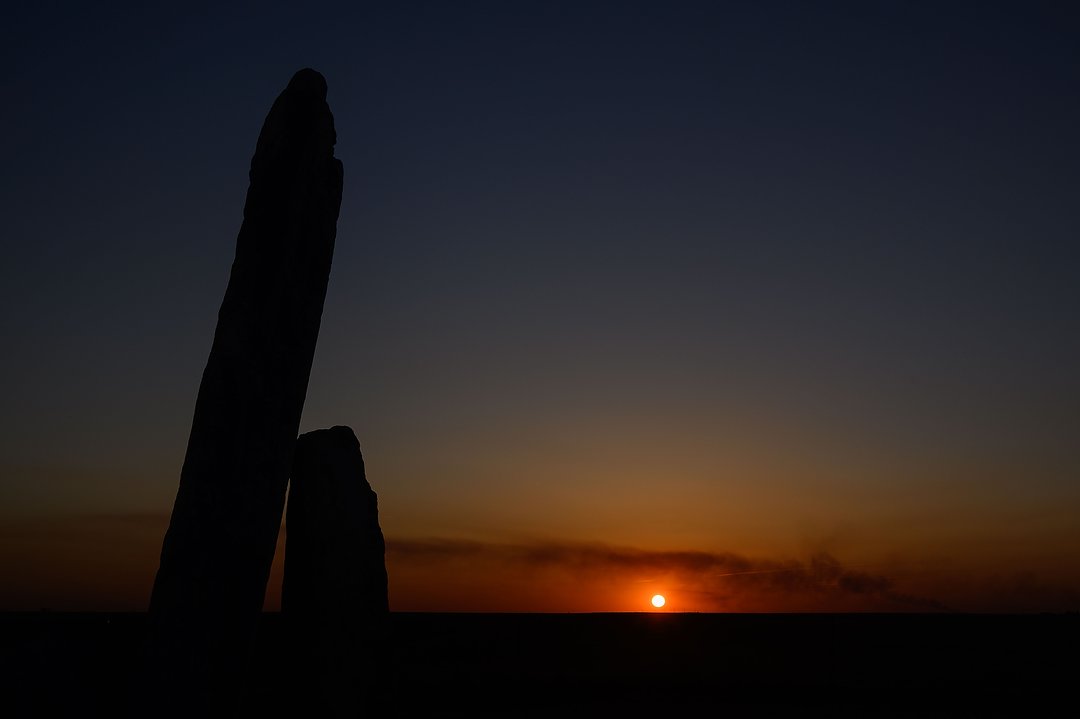
This was from my first visit to Teter Rock. Nice sunset, but I needed to get out of there while I could still avoid the worst ruts in the track. Nikon Z 6 II, Aperture Priority, Sunny white balance, ISO 160, 1/640 at f/10 in Matrix metering, -2.0 EV, Nikkor Z 24-200mm f/4-6.3 VR lens at 38mm.
This past March I was on another trip further west of there with some friends, and using their truck, we were able to get in to Teter Rock for a night shoot (and back out!). That worked well, and I could see that the horizon glow (created by towns or cities) in the direction of the Milky Way was minimal. Sadly, the Milky Way itself wouldn’t make an appearance until nearly dawn, and we weren’t that committed!
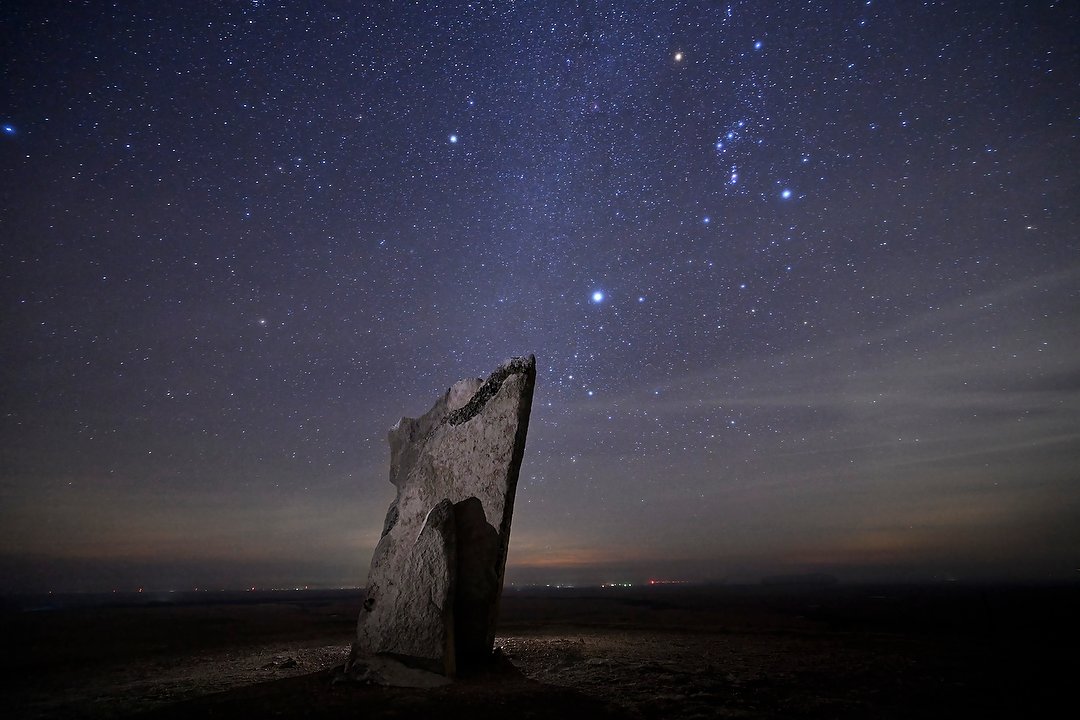
On the second visit there I was able to stay until after dark, but not late enough for the Milky Way to make an appearance. Lit with two Lume Cubes, one left and one behind. Nikon Z 9, Manual exposure, 3800K white balance, ISO 12,800, 30-seconds at f/4, Nikkor Z 14-30mm f/4 S lens at 15mm.
Last week I looked ahead to the weather forecast for that area (using the app DarkSky), and Thursday night was promising. First, it called for no clouds. Second, humidity would be lower than usual (less humidity means a clearer night sky). Third, it would be just after a new moon, and the thin crescent would set around 10:30pm (moonlight makes the Milky Way harder to see and photograph). And finally, the “Galactic Core” of the Milky Way (the largest part) would be visible starting around 10:30pm. So I looked at my list of “want to visit” locations nearby, made a plan and called up two friends who enjoy going out with me for night photography.

PhotoPills is a great app for figuring out where the sun and moon will be, and also things like the Milky Way and meteor showers. This was what it told me to expect that Thursday.
Leaving home at 3pm, we drove two hours to the first location, a small town I’d read about, mostly deserted, with an old mill on the river. We walked the area, picked a few locations that might make good night photos under moonlight, and moved on. Our second stop was an abandoned oil town outside of El Dorado. There we came up empty, not finding much worth shooting, day or night. Then it was on to Beaumont, KS, where I knew we’d be able to make some pictures. After all, near the grass airstrip there’s an old plane once used by a famous drug smuggler, a wooden water tower and caboose. Once arriving, it looked as good as I’d hoped, so now there was just the matter of waiting.
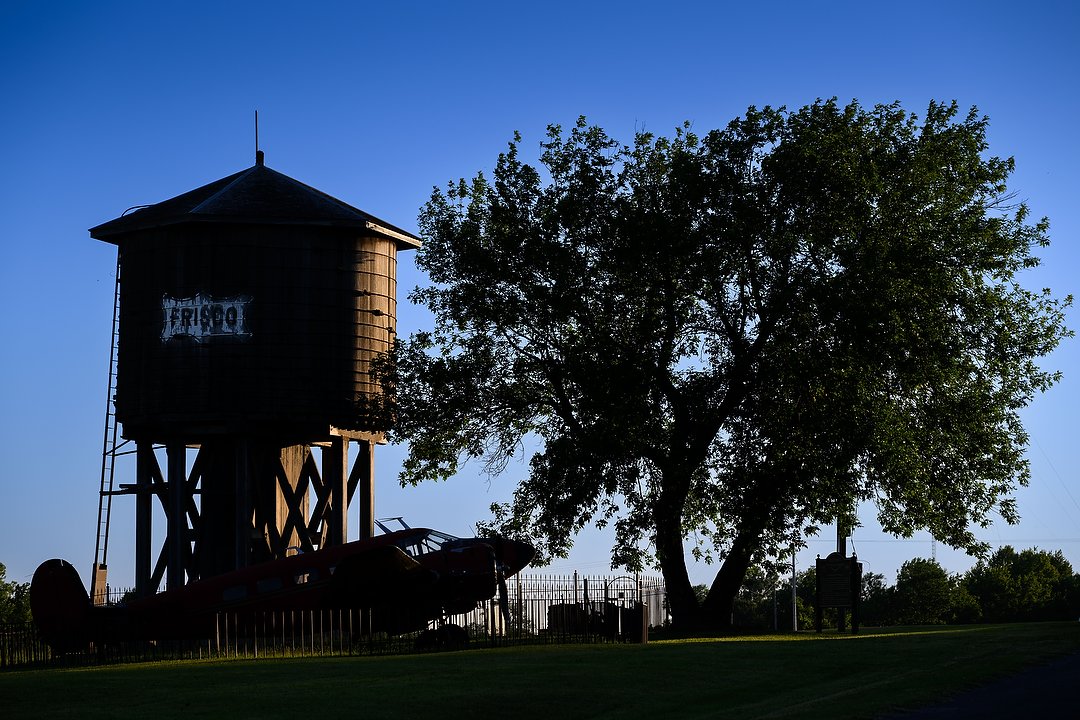
Just two of the nice subjects available for us to photograph in Beaumont, KS. Now we just needed to wait for night. Nikon Z 9, Aperture Priority, Natural Auto white balance, ISO 100, 1/500 at f/5.6 in Matrix metering, -0.7 EV, Nikkor Z 24-120mm f/4 S lens at 96mm.
One of the challenges with night photography is that you want to get there before dark, to scout the area for safety (rocks, holes and such) as well as figure out where you’ll shoot from, and if lighting it, where the lights will go. Then you wait. And wait some more. True darkness comes about two hours after sunset. So we settled in and had a nice conversation with a pilot from Colorado making a stopover there on his way to Georgia.
About an hour after dark, we went to work, to take advantage of the fading blue sky of dusk. The first subject was the plane that pilot was flying. A nicely restored model from 1958, I used two Lume Cubes, then adjusted their power to balance with the ambient light from the small hotel nearby. After that we photographed the water tower and caboose, then shifted our attention to the old twin-engine drug smuggling plane. Finishing up near 11pm, we packed up and started the hour-long drive to Teter Rock.
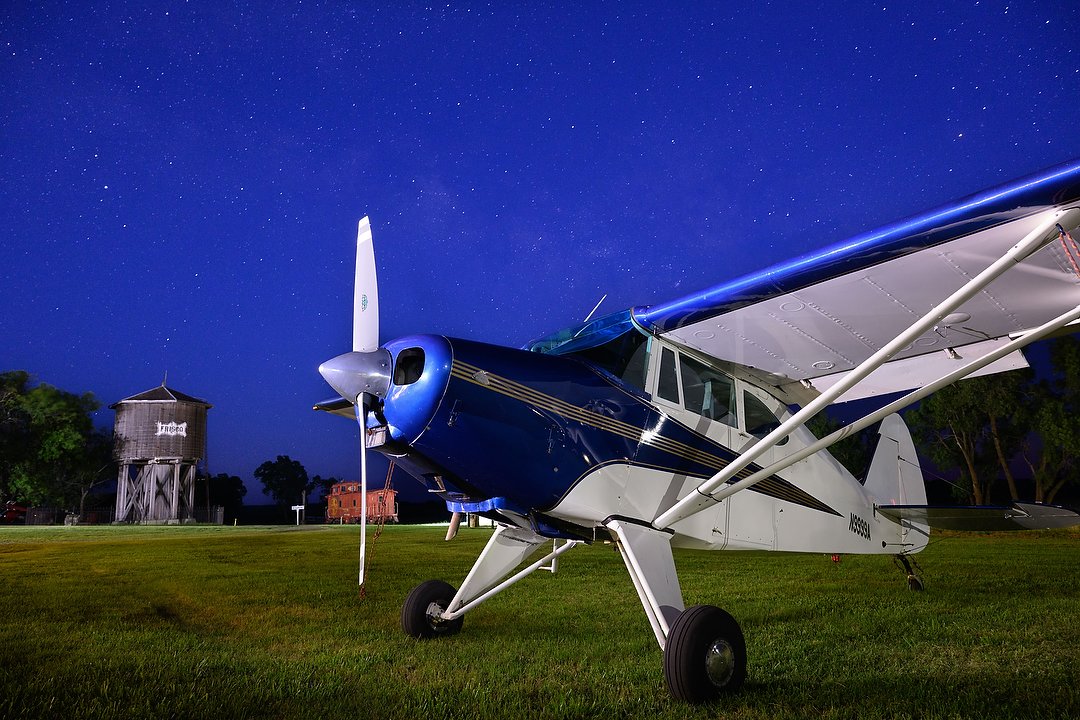
There’s a grass airstrip with a small hotel nearby, so this plane’s pilot was overnighting in Beaumont. We’d chatted with him and asked permission to photograph it (and sent him photos later). I used one Lume Cube just in front to light the prop and nose, and a second at far left for some backlighting. The illumination on the right side is from the town and hotel. Nikon Z 9, Manual exposure, 3800K white balance, ISO 1600, 20-seconds at f/5 in Matrix metering, -0.7 EV, Nikkor Z 24-120mm f/4 S lens at 24mm.
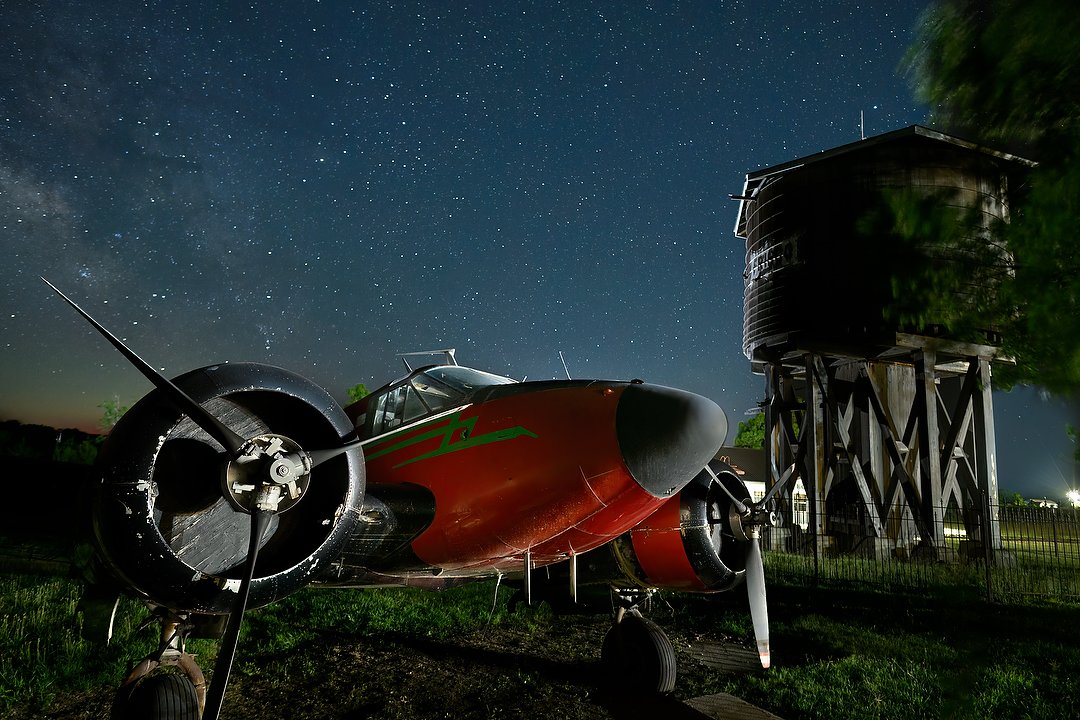
And here’s the old twin-engine plane on display there. In this case I was only using one Lume Cube to light the left side of the water tower. All the rest of the light was coming from the town. Nikon Z 9, Manual exposure, 3800K white balance, ISO 2000, 13-seconds at f/2.8, Nikkor 20mm f/1.8G lens.
Having been there twice before, and with dry weather the previous couple of weeks, getting in wasn’t a problem. Better yet, the sky was just what we’d hoped for – clear, with the Milky Way shining brightly above it. For the next 90-minutes we photographed Teter Rock, both in silhouette and lit with those same two Lume Cubes, as the Milky Way slowly rotated above over it. By 1:30am we were done, and packed up for the 2.5-hr drive home.
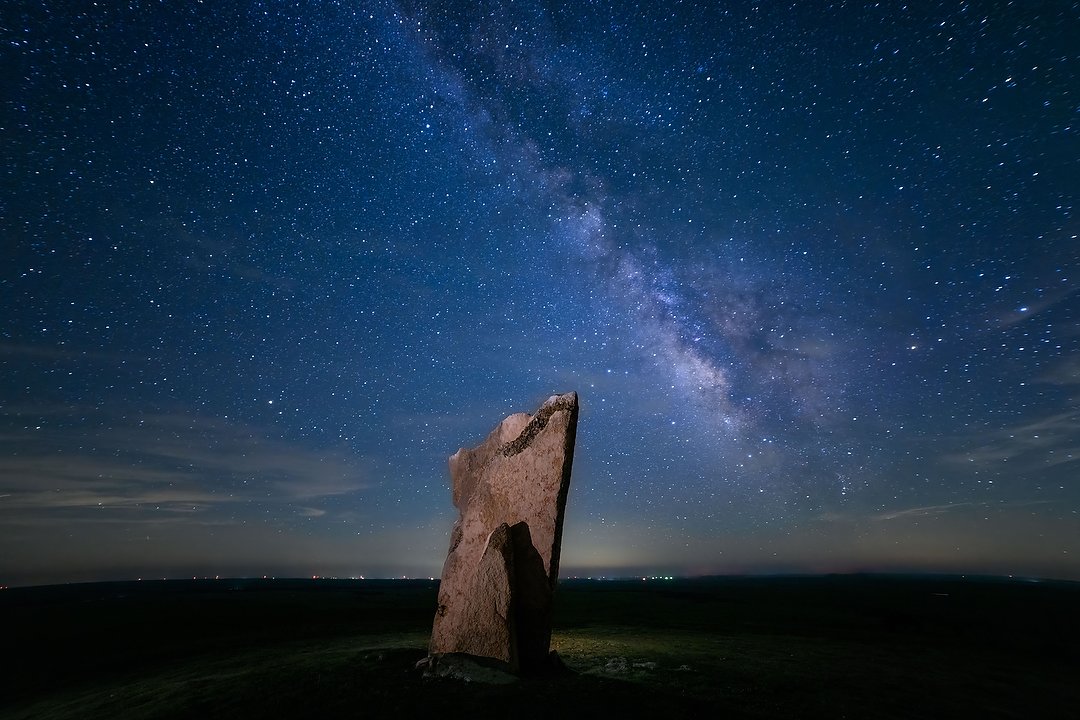
Finally! Teter Rock and the Milky Way, something I’d envisioned two years ago. Lit by one LumeCube at far left, with barn doors, and a second behind it, with a dome. Nikon Z 9, Manual exposure, 3800K white balance, ISO 5000, 30-seconds at f/2.8, Samyang 14mm f/2.8 lens. Photo copyright Reed Hoffmann.
Planning and persistence paid off. What began as a way to fill some downtime at the start of COVID has turned into a project I hope continues for years to come. Because, after all, Kansas is a huge state, and there are many, many more places I have yet to discover.
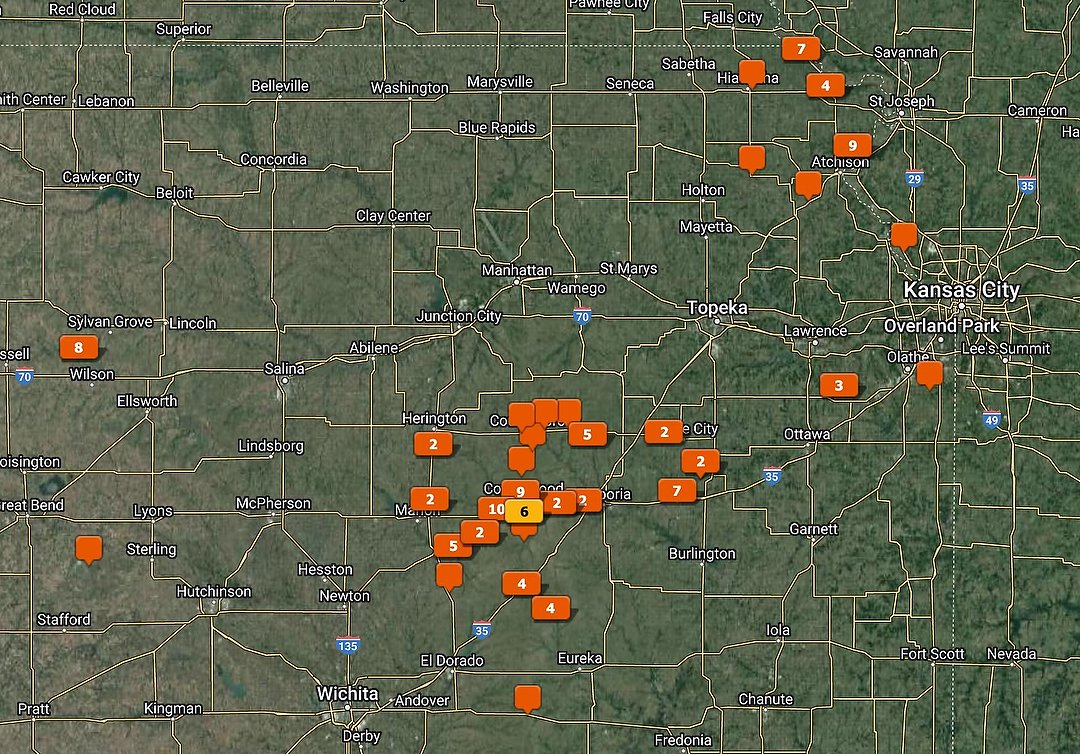
How many more places, you ask? I keep a folder with photos of places I want to visit, with GPS data, in Lightroom. So I can call up the Map view and see where they all area. This makes planning an outing much easier. As of this time, there are 112 photos in there.
Want to see more of my night photography/light painting photos. Click here for a gallery.
(If you like this story, please share it with your friends and let them know about the links on photography that I post on my business Facebook page. I’m also on Instagram and Twitter, @reedhoffmann. And if you’re curious about the workshops I teach, you can find them here. You can subscribe to this blog, to be notified when new ones are posted, on my home page.)

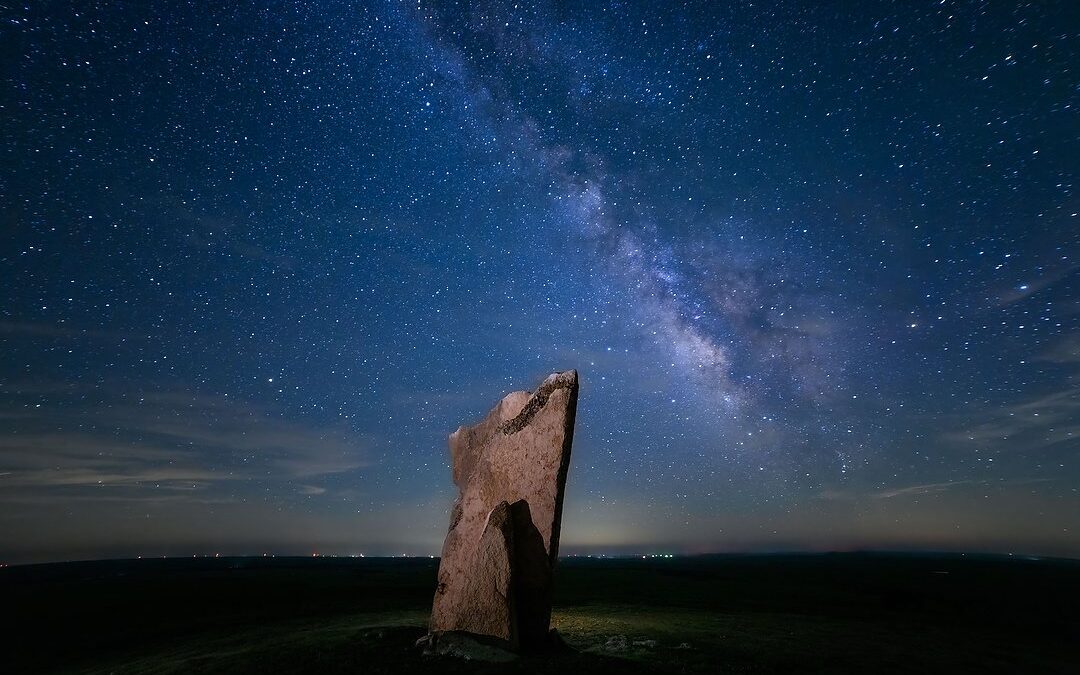
Hi Reed, A great story & great images! Thanks for sharing how you got the shot…It’s kinda like the old saying…the harder you work the luckier you get!